Judith Thurman’s Exquisite Taste
The prize-winning author and “New Yorker” staff writer shares some of her favorite clothes collected over the years, from Comme des Garçons to ISSEY MIYAKE to Isabel Toledo.

The qualities that tend to make someone’s outfit interesting aren’t all that different from the qualities that make for a memorable sentence: funny juxtapositions, departures from the common wisdom, grace notes that wink and surprise. Not many writers working today are stylish enough to pull off the latter. An even smaller fraction are capable of dressing cool, too.
It was on a soggy December afternoon that Judith Thurman, one of those rare writers who excels at both pursuits, opened the front door and welcomed us into her Upper East Side home. The longtime staff writer was wearing all black: a pair of flowing satin pants from Lanvin paired with a Comme des Garçons tunic with a fantastic ruffly bib. An almost neo-witchy chic. At 78, Thurman understands that good style is usually more improvisational than logical, and that it’s within that burbly alchemy of experimentation that the fun stuff usually goes down. Thurman bought her townhome 35 years ago, and it’s filled with artifacts acquired over the course of a career that spans five decades: Eames chairs from the 1930s, an heirloom dictionary that’s been in her family for generations, walls of built-in shelves overflowing with rare books. “This house gives the mistaken impression of great wealth or whatever,” said Thurman. “It is an illusion. I’ve thrifted all my life. Most of the furniture, not all of it, is also from thrift stores, and the art is all from friends.” Thurman was born on the other side of the East River, in Queens. She attended college at 16, and crucially to her cultural education, relocated to Europe upon graduation. “I lived in England and everything was so cheap, even by the standards of back then,” she said, pointing to a heavy William IV writing desk that she bought five decades ago. “That was 40 or 50 pounds.” Thurman began her career in letters as a poet, publishing her first poetry collection, , in the early ’70s. But she soon found a rhythm writing long, artfully composed essays, a form that allowed her the freedom to descend into her curiosities while writing with the care and precision of her former vocation. “The writers I admire most never use a careless word,” she wrote in the introduction to her 2022 essay collection A Left-Handed Woman. “Their sentences are unimprovable.”
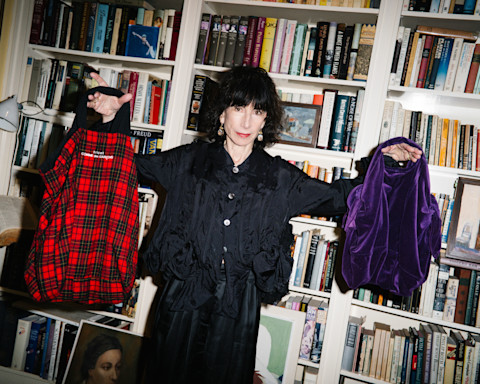
Poetry, like fashion, “makes unexpected connections to feeling, perception, nature, desire, and sense of self,” she explained to me. “It’s the unexpected connections that make a great stylist in any genre.” Her work has earned her distinctions long enough to fill a CVS receipt (a National Book Award for Nonfiction, for starters; more recently the Dudley Prize for Arts Writing, “kind of a lifetime achievement thing”) and often concerns the lives of powerful and often terminally misunderstood women, like Amelia Earhart, Charlotte Brontë, Anne Frank, and even the controversial German director Leni Riefenstahl. ”Strong women, that’s sort of my thing,” said Thurman.Notably, she was also, for a long while, the ’s sole fashion critic. It was a somewhat odd role which she recalled David Remnick, then freshly installed as the editor-in-chief, steering her into nearly three decades ago. “I took time off to do a biography [of Colette], which took eight years,” said Thurman. “And then when I went back to work in 1999, [Remnick] said, ‘Great, what do you want to write about?’ I said, ‘Books.’ He said, ‘No, no, no. We have a million people to write about books. What else do you want to write about?’ I said, ‘Well, I want to write about fashion’”—particularly its “social history, fashion as a form of communication, fashion as a language.”

Remnick does not dispute her account. “I think I would be happy if Judith Thurman wanted to write next about the National Football League,” he explained to me in an email. “The point is, I love reading her on whatever moves her, and she is a woman of parts, of wide-ranging interests and sensibility, a deep reader of literature, someone with a keen eye for fashion, and more. A smart editor follows the lead of the writer, especially one as colossally talented as Judith.” Her profiles and essays on the designers who have shaped contemporary fashion—Coco Chanel, Yves Saint Laurent, Cristóbal Balenciaga, Alexander McQueen—are all rigorously reported, vibrant portraits that use the clothes to understand their motivations and desires. But it was Thurman’s singular 2004 profile of Rei Kawakubo of Comme des Garçons (titled, in print, “The Misfit”) that drew me into her work and shaped the way I think about clothing, most notably as a form of rebellion, as a way to figure out how you’d like to comport to the world, if at all:
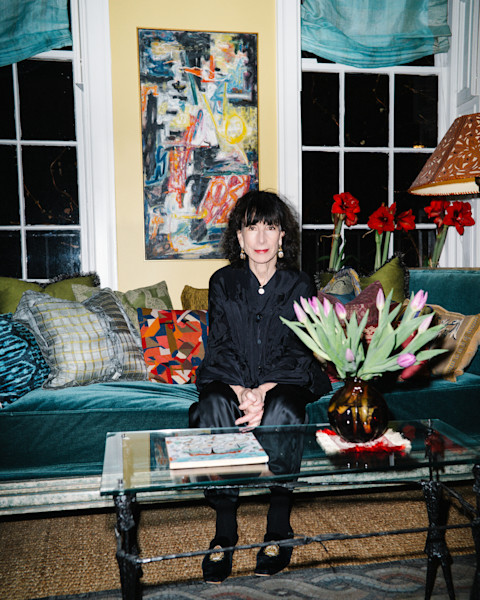
Thurman stopped writing about fashion a few years ago: Her last big profile was published in 2016, on the Chinese dressmaker Guo Pei. But she has written several stories since, including two on Homer and . “I loved writing about fashion for a while,” she told me. “And then the truth is, I aged out of it in the social media era, which I don’t do. And the fashion world completely changed. It was no longer about the street.” We asked Thurman to share a few of her favorite items from her closet filled with CdG, YOHJI YAMAMOTO, Romeo Gigli, ISSEY MIYAKE, Rick Owens, and more, collected over the years. “Compared to some people, I suppose I have a lot of clothes,” she said. (Please note that the following conversation is edited, a combination of an in-person and email.)

Tell me about this outfit you’re wearing.She knew your taste.How about your jewelry?
I’ve been a thrifter since I was 20, or since I learned that there was such a thing as thrift. I didn’t have much money, but I love the idea of the hunt. I’ve written a lot about that, and finding things and putting them together. For fun, I like to take people shopping who are not good shoppers. And they say, “How did you find that?” I say, “You have to soften your eyes.” When you walk into a crowded thrift store you have to soften your eyes. It’s a way of not getting overwhelmed. This [CdG] top came from this wonderful resale store that was in the neighborhood, which was like a gathering place on Sunday afternoon for the habitués. And the owner was a woman named Tamara. And so this top she didn’t sell. She thought it was really me.She knew my taste really well. And the pants come from La Boutique Resale on Madison Avenue, where I find a lot of good stuff.This is a Bulgari ring that my best friend who died left to me. And this was a ring that I got in Africa when I was working on [ Isak Dinesen: The Life of a Storyteller] from a friend, whose [original owner] died of snake bite. So she couldn’t own it. And then this is one of several wedding rings that are inoperative.
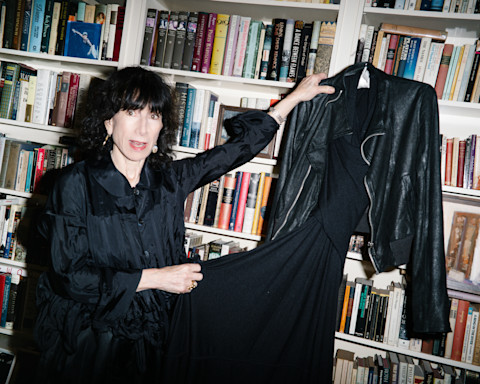
Rei Kawakubo is notoriously reclusive. Why do you think she agreed to be profiled by you?Do you have a specific moment you can recall where you were awakened to the idea of clothes and how to dress?
I had a track record as the kind of fashion writer that she would talk to, writing about designers and writing about women; she’s a feminist. I talked to Adrian Joffe, her husband, most of the time, but she sat down for a couple of interviews. She said almost nothing, which is in the piece. I think that she was grateful that I didn’t ask stupid questions.I had a French boyfriend and his mother was very chic. I didn’t know anything. I was literally the girl from Queens. I was unselfconscious. I didn’t know how little I knew. And they invited me to this opening for Joan Miró, and the father of my boyfriend was a very famous art critic, and it was in a casino in Belgium. It was a huge gala. Important thing. I didn’t know what to wear. I went to the old Biba in London and I bought a white cotton canvas skirt, and I had a sort of strange T-shirt, sleeveless, with stripes. And I had a knitted hat with cherries, and my hair was really bushy. And I wore that. I was the youngest person there.
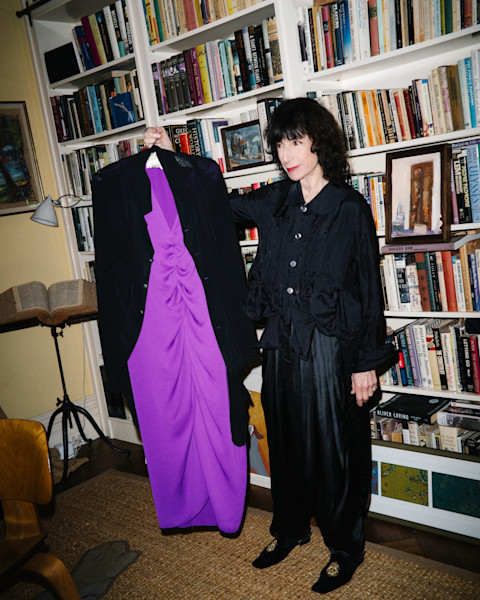
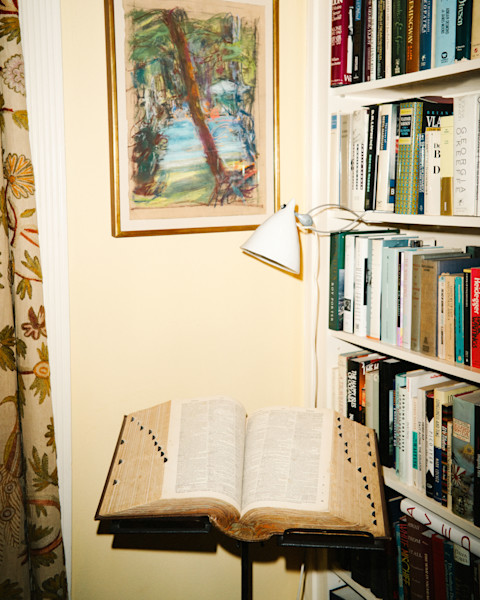
How old were you?
I was 20, 21. And I was sitting next to a woman, the chicest woman I’d ever seen. She was my size now, maybe, probably even thinner. And she had blonde hair and was wearing a Saint Laurent short suit, like long shorts with a tuxedo jacket. The first course was caviar, the real thing, which I had never tasted I had never even seen. So, I ate it all up. And she was watching me. She was smoking, everybody was smoking, and she said, “Oh, you can have mine.” When I look at the pictures from that night, it’s so sweet. But I had to up my game. I saw what the game was.
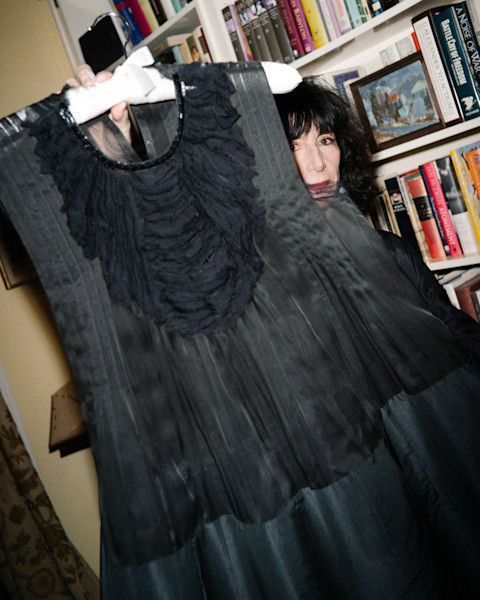
Did that inform your appreciation for drape and structure?
I became very interested in French style. I speak really good French from living in Paris. Even people my age back then, everybody had a terrific sense of style. But it was living in London in the ’60s. It was Europe. I lived in Rome for a while, too, and I worked at a gallery where I kind of had to [dress a certain way]. I remember , the film, came out and the clothes were all done by Saint Laurent, and there was a black dress with a white collar. I thought it was the most amazing thing.
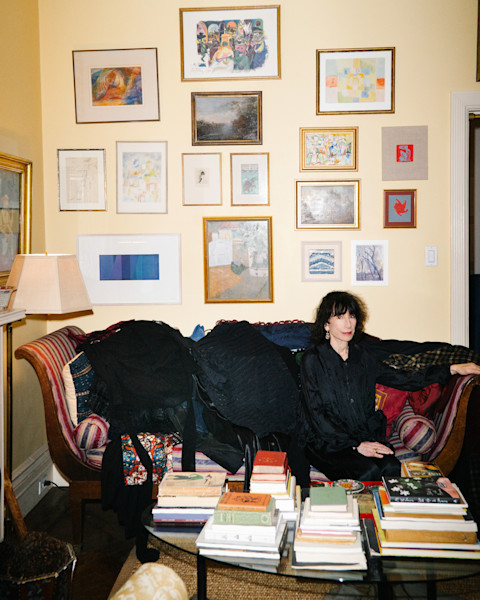
How did your taste go from Saint Laurent to more avant-garde?
It was later. First of all, Rei was a phenomenon of the ’80s, but this was 20 years before all of that. And so as I came back [to the US] and became the writer that I am, I was living in a very different world and interested in fashion. As a social critic, I just loved it when the Japanese stuff hit. That was me. I realized Rei was talking to me.The other thing that I want to mention—one of my favorite pieces was on Betty Halbreich, the 90-something-year old Bergdorf shopper. And I knew a lot by that stage, I was very sophisticated, but Betty was the greatest personal shopper of all time. And I would see the way she did things and the way she got dressed: She mixed it up.
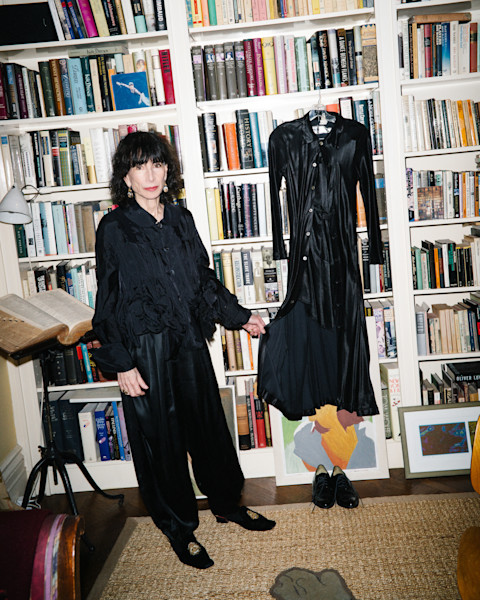
Where else do you take your friends shopping to help them discover their own tastes?
Well, now all the thrift stores are gone, but we go to the resell stores in the neighborhood. Brooklyn is useless. Useless. I said this to somebody recently. Don’t go to a vintage store in Brooklyn, go to SSENSE. The same price, but the SSENSE stuff is much nicer.
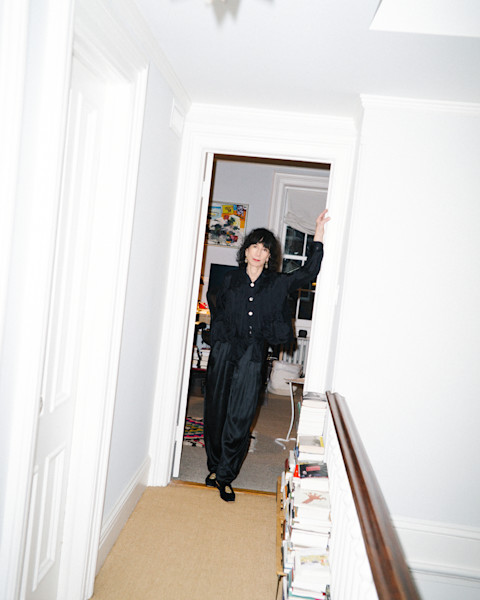
I remember reading in one of your books that you enjoy writing about other people because it allows you to learn something about yourself. Is there a designer whom you’ve written about where that’s especially true?
Oddly, or perhaps not, McQueen. It’s at the end of the essay “Dressed to Thrill,” and I have been considering the charges of perversity and misogyny by feminist critics, who complained that he eroticized violence. The last graf reads, “Yet McQueen felt an even deeper sense of identity with the broken and martyred women who stirred his fantasies, and whom he transfigured. The real agenda of his romance with fragility may have been hiding in plain sight, tattooed on his arm, in the yearning line spoken by Shakespeare’s Helena—a scrappy girl who feels that her true beauty is invisible: ‘Love looks not with the eyes but with the mind.’” That yearning, that dilemma, and that scrappy girl, —or was—. But I could not have articulated it.
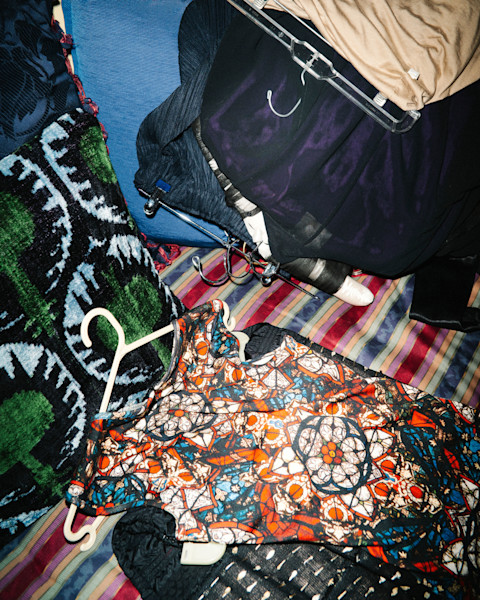
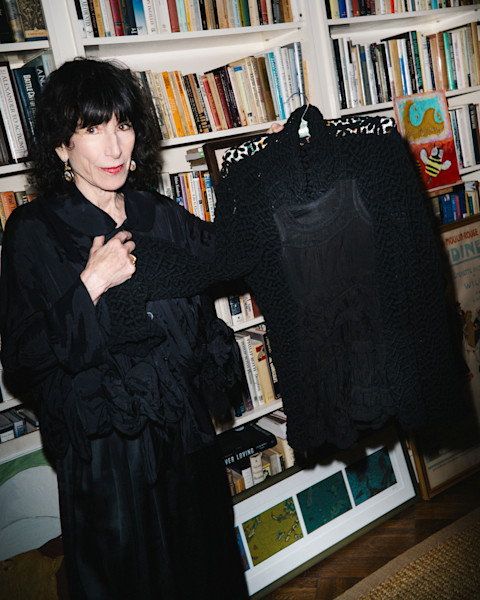
Why did you enjoy writing about McQueen so much?What part of the day are you usually writing?
His clothes are narrative. He’s a poet. There’s the relationship with the mother, the darkness, the beauty. He was such an angry guy. I did an event, a festival event with him and Stella McCartney. And he was very surly. But at some point they just really sort of opened up and he said, “Why are you asking us that? I’m not an intellectual! Why are you asking me these questions?”In principle, I’m supposed to be working during the day, then I go for a very long walk. But I write when I’m on deadline. I just write. I know that I can’t do more than six hours. So I get up, I have my coffee. I do one puzzle, the Spelling Bee, and then I start to write and I start to work. At one, I realize I’m hungry. I eat a little something, and then I go for a walk, usually about an hour. And then I come back and I will maybe do another hour and try to get to bed at a reasonable time.
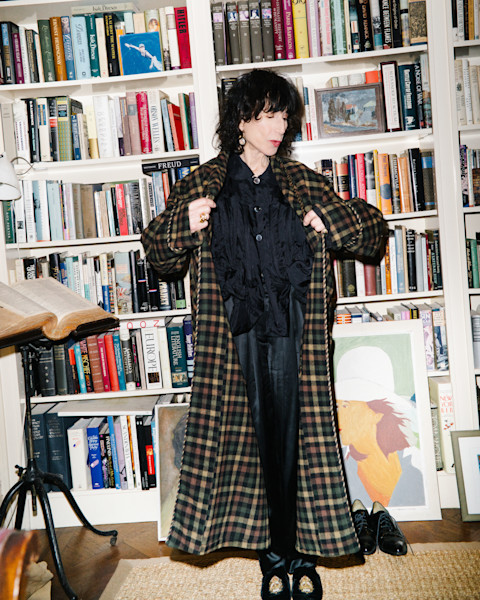
What’s the most perfect sentence that you’ve ever written?
You have just asked one of the best questions any interviewer has ever put to me: the most perfect sentence, or at least the one I am proudest of. “Perfect” is relative of course, but there are two that made me happy—that appeared on the page like little miracles. One is from “Night Kitchens,” my essay on artisanal tofu in Japan. It begins with a description of the Zen rock garden at Daisen-in, a temple in Kyoto, where I went for the weekly meditation that is open to the public: “...for all its austerity, the garden is an image of release: of the moment at which, after an intractable struggle, you get permission from yourself to let the inessential go.” The other is from an essay on the British poet Alice Oswald, "Streaming Device," in I had been describing her long poem about the river Dart, and the elusiveness of her images, and the sentence is: “They speak to the mistrust she wants you to feel towards the way that language betrays reality by stabilizing it.”
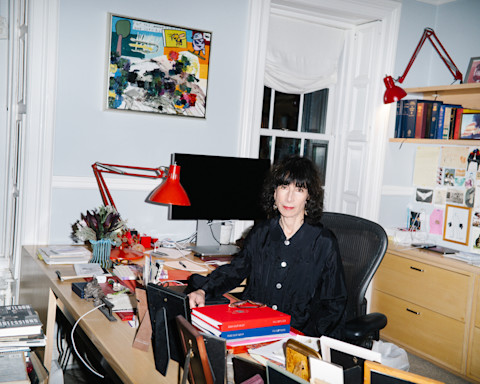
SSENSE’s


